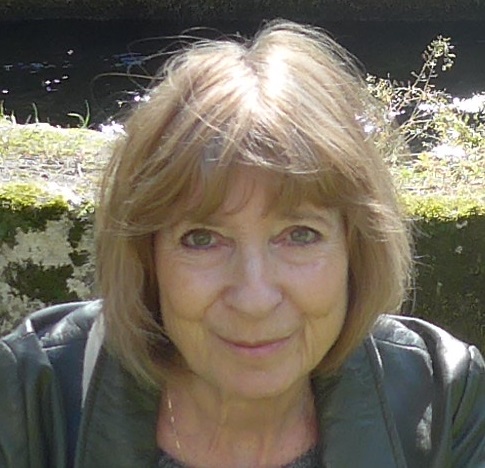A Country Walk to the Childhood Home of Louis Braille
- SUBSCRIBE
- ALREADY SUBSCRIBED?
BECOME A BONJOUR PARIS MEMBER
Gain full access to our collection of over 5,000 articles and bring the City of Light into your life. Just 60 USD per year.
Find out why you should become a member here.
Sign in
Fill in your credentials below.
It was entirely by chance that I came across the modest little house in which the world-famous blind inventor of Braille was born. It is in the quiet village of Coupvray, 37 km east of Paris near the River Marne, where I was on an exploratory walk. I went back several times before discovering that it could be combined with a country walk to an equally modest little restaurant next to a railway station.
Braille’s house is now a museum which is open in the afternoons and the restaurant is open only for lunch. So the walk starts with an optional pre-lunch 2½ km canal-side walk from the station at Couilly to the restaurant at Montry and continues across country for 5 km to Braille’s house. From there it is just over 2 km along a pretty but little-visited stretch of the canal to the station at Esbly.
But if the main attraction is Braille’s house rather than the walk you could skip the first canal walk, delightful though it is, and get off the train at Montry for lunch at the restaurant before continuing along the rest of the suggested route, a total of 6½ km. Or simply get off at Esbly station, walk 2 km along the canal to Braille’s house and return via the towpath walk on the other side of the canal, crossing back into Esbly at the bridge. Food options in Esbly are very limited but this is by far the quickest route to Braille’s house if you are coming by train.
Suggested 9 km walk from Couilly to Esbly
Turn right from the station at Couilly-Saint-Germain-Quincy to walk through a covered Sunday market next to the railway line. The market is small and sells mainly local produce, including the cheese for which the Brie region is famous.

Fromagère at Couilly market. Photo: Wendy Sweetser
At the end of the market cross the railway line at the level crossing and turn left at the bridge to follow the PR route through a car-park and along a rutted small road leading past stables on the right which soon turns into a footpath along the disused Canal Latéral du Morin. The path can be muddy but it is the quietest and prettiest part of the whole walk. I have seen violets and cowslips here in spring, the striking red berries of the rare plant Iris foetidissima in autumn, a few swans and very few walkers. The only sound is of birdsong and waterfowl.

Canal-side path between Couilly and Montry. Photo: Annabel Simms
The path will eventually take you across a little bridge over a stream with a faded information panel about the history of this stretch of canal, in operation from 1846 to 1963. Continue past a road bridge and a striking curved bridge nearby.

Disused canal bridge near Montry. Photo: Wendy Sweetser
Continue past playing fields on your left until you reach the next road bridge and turn left here into the Rue du Condé. At the end of this road you will see the station of Montry-Condé straight ahead. Go over the level crossing and the restaurant is opposite on the left, at the corner of Avenue Foch and Avenue de la République.
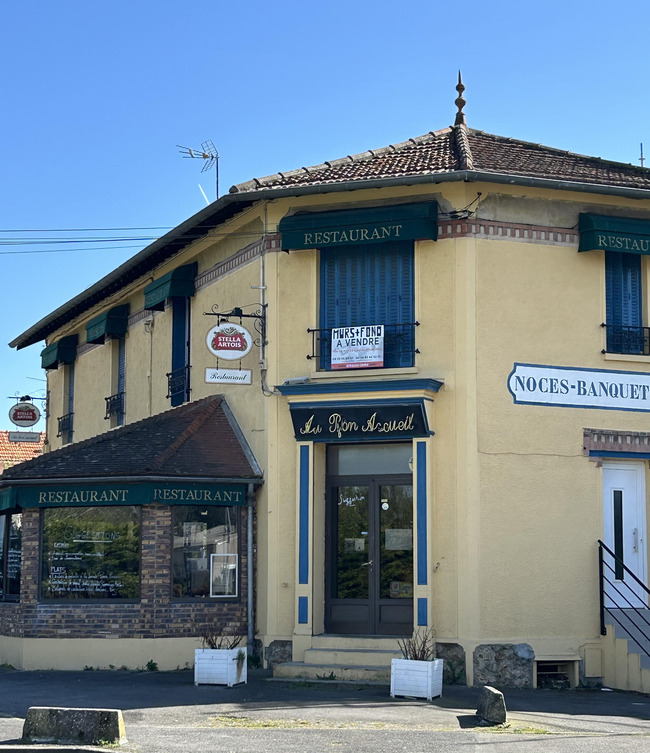
Au Bon Accueil restaurant at Montry. Photo: Wendy Sweetser
Au Bon Accueil is an unpretentious establishment with a shaded terrace at the back, run by a middle-aged couple. It offers traditional French dishes such as cassoulet maison (dried white beans slow-cooked with smoked sausage and preserved duck) and tête de veau sauce gribiche (boiled calf’s head with a sauce made of eggs, pickles and capers) to a faithful local clientele. Prices are reasonable and the atmosphere is comfortable and relaxed. It is the kind of modest old-fashioned restaurant which is, sadly, fast disappearing from Paris.

Au Bon Accueil restaurant. Photo: Saara Marchadour
Turn left from the restaurant into the Avenue de la Gare, slightly uphill, and left again at the end into Avenue de la République and continue for about 200 meters. Just before no. 23 on your right you will see wooden posts at the entrance to an unmarked grassy uphill path. The path is actually a PR route which continues uphill over a small road and through a wood full of wild flowers, where it levels out. I once saw a wild boar here being chased by a dog, followed by the unforgettable sight of two young men wheeling their luggage through the wood to the station at Montry, looking like pilgrims from the Middle Ages.
At the end of the woodland path turn left onto a small road leading to Coupvray. At the crossroads carry straight on and continue along the increasingly suburban Rue de Montry. Turn left at the end of this road where you will see the church on your left, opposite the Mairie.
Cross the road to the church, where Louis Braille was baptized in 1809. Dating from at least the 12th century and reconstructed in the 16th and 17th centuries, it is usually open except between 5 and 6 pm and is well worth a visit.
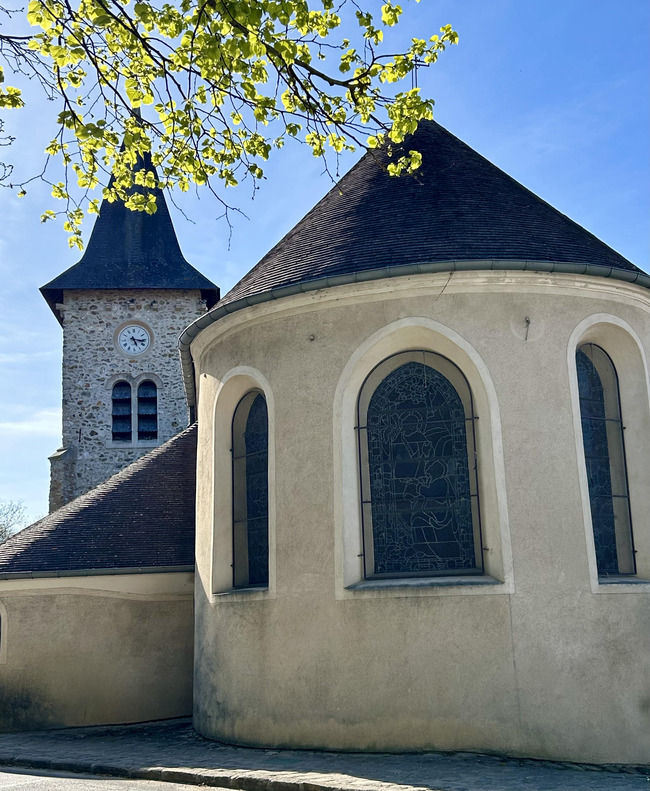
Church at Coupvray. Photo: Wendy Sweetser
Turn left from the church entrance, go round it and back up to the road which leads to the lavoir (wash-house) straight ahead. Keeping the lavoir on your left follow the path to the cemetery. You will pass a monument to Louis Braille in a small garden at the end of the path on the left, put up in 1887.
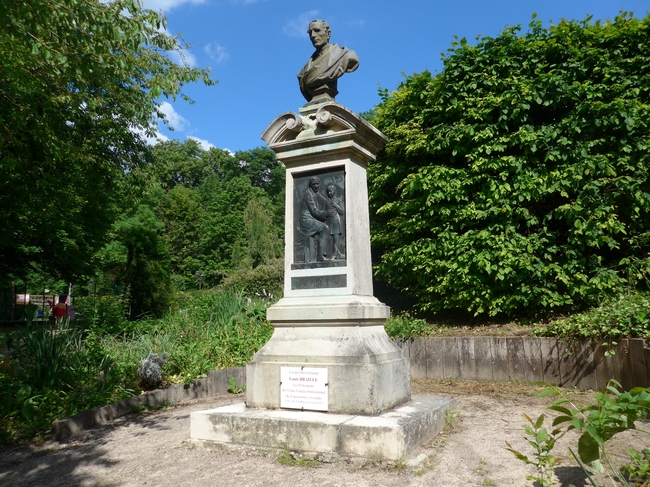
Memorial to Louis Braille at Coupvray. Photo: Annabel Simms
In the cemetery ahead go through the small gate on the right. Braille’s tomb is the third on the left, in the sixth row ahead of you.

Tomb of Louis Braille at Coupvray. Photo: Annabel Simms
Braille (1809-1852) was initially buried here but his remains were transferred to the Panthéon in Paris in 1952. However, the village obtained permission to keep his hands, which are interred in the rectangular box on his tomb.
Return to the cemetery gate and turn left. Keeping the cemetery on your left carry straight on downhill over a little stream and a small roundabout and continue straight on uphill. Take the first right, the Chemin du Château Gaillard which is signed “Maison natale Louis Braille,” and follow the woodland path, slightly downhill. At the end of the path on the right you will see a small house and a pretty garden, Le Jardin des Cinq Sens, open to the public. Access to the house-museum is through the garden or by the path beside it.

Garden of Louis Braille’s house at Coupvray. Photo: Annabel Simms
The museum is staffed by an enthusiastic and kindly man, M. Stéphane Mary. Allow about an hour for the guided visit, in French or English.
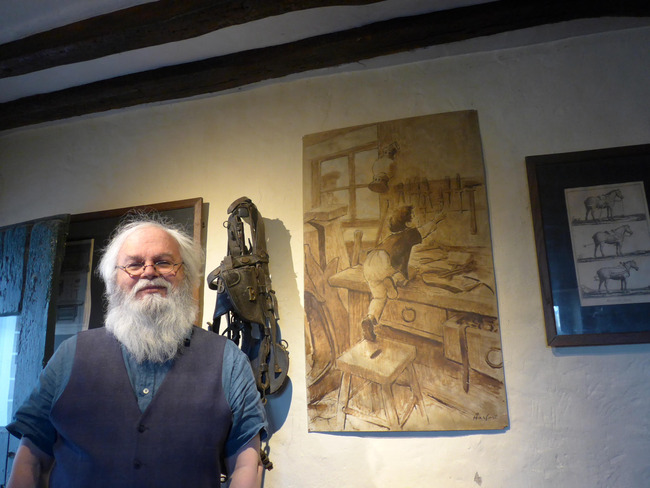
Stéphane Mary next to a drawing of the young Louis Braille. Photo: Annabel Simms
It consists of only three rooms, the main one in which the family lived and the parents slept,

Living room of Louis Braille’s house. Photo: Annabel Simms
the fatal workshop in which the three-year-old Louis accidentally blinded himself while playing with his father’s tools – his father was a harness-maker – and a room upstairs displaying the history of writing systems for the blind and explaining Braille’s brilliant and definitive contribution at the age of 20. It includes a machine on which M. Mary will help you to write your name in Braille on a slip of paper to take home with you.
On leaving the museum continue downhill along the Rue Louis Braille and turn left into the Rue du Canal, which has a ditch running along the right hand side. Go to the end and turn left to go up onto the bridge over the Canal de Meaux à Chalifert. Cross the bridge and take the footpath on the right which will take you back towards the bridge. Look for the discreet GR sign on a footpath on the left and follow it along the canal to Esbly.
The narrow path is surprisingly rural and almost deserted, eventually widening out to become a small road near a bridge.

The Canal de Meaux à Chalifert between Coupvray and Esbly. Photo: Wendy Sweetser
Continue along the canal until you see a green road-bridge ahead which means you are at Esbly. Turn left, through a Total petrol station facing the war memorial and left again into the long straight Rue du Général Leclerc which goes through the center of Esbly and ends at the station on the left. Trains for Paris leave from the platform in front of you.
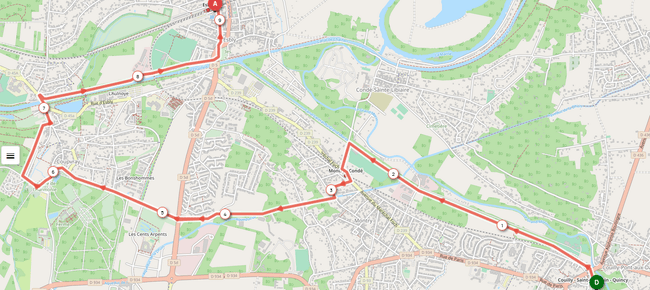
9 km walk from Couilly to Esbly station. Credit: Annabel Simms
Line P trains from Gare de l’Est to Meaux run every half hour there and back and take 32 minutes to Esbly.
For the stations at Montry-Condé or Couilly-Saint-Germain-Quincy, change at Esbly for the little branch line to Crécy la Chapelle. Trains run hourly there and back and the total journey time is 42 or 45 minutes including the 8-minute transfer.
Lead photo credit : Louis Braille’s childhood home at Coupvray, Photo: Annabel Simms

